Monday, October 31, 2016
Sunday, October 30, 2016
Mondays in Iceland - #83
Aluminum
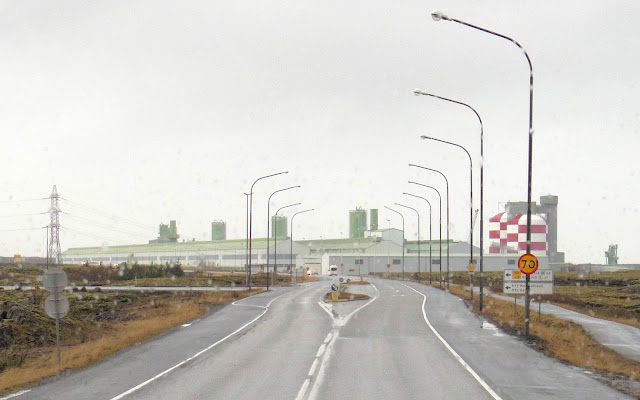
Any visitor to Iceland will be familiar with the enormous aluminum smelting plant that runs parallel to the highway between Keflavík and Reykjavík.

Part of the an industrial trend that has helped modernize the country, the cheap electricity from geothermal and hydroelectric plants makes it practical to ship aluminum ores halfway around the world to be smelted into ingots. A downturn in the markets can wreak havoc with the profitability of the industry. A recent trend of making vehicle bodies from aluminum instead of steel may temper the volatility of that market.
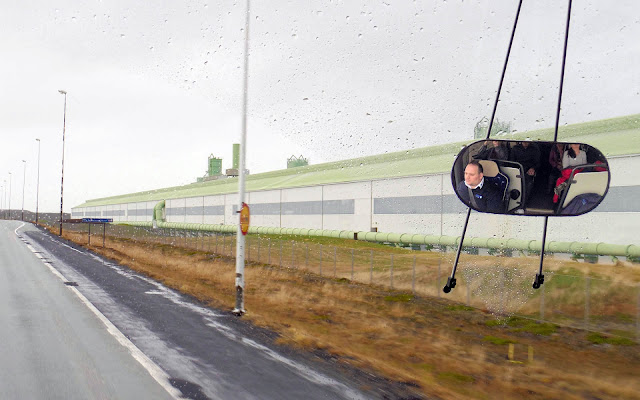
Seeing it approach as I return to the airport on the FlyBus it has become, to me at least, a symbol of farewell.
By Professor Batty
Comments: 0
Saturday, October 29, 2016
Wayward Heroes
Here’s a new post from my Laxness in Translation website:

Viking Invaders, Bayeaux Tapestry
This is Philip Roughton’s new translation of the great Icelandic novelist Halldór Laxness’Gerpla, (previous English title: The Happy Warriors). It is a retelling of the Fóstbræðra ("Sworn Brothers") Saga. This translation completely supersedes the Katherine John translation from the Danish. That version was written in an awkward psuedo-Middle English style and had also eliminated the Icelandic characters ð and þ from the text. Roughton also chose to preserve the Saga literary device of changing from past to present tense at dramatic events, a device that Laxness had retained but was lost in the John translation. It gives the narrative an added dimension, as if it was being presented orally (as the Sagas were originally presented) rather than as a dispassionate history. While reading it in the new translation, I got a better sense of the sarcastic edge that Laxness gave to the narrative, particularly in the dialog of the women in the story, who offer a counter-point to the two hapless “heroes” on their misguided quest for glory. Roughton also supplies the reader with helpful end-notes about some of the more obscure points in the story.
Historical fiction, if it is to succeed in transporting the reader to a distant era, must impart a sense of verisimilitude in the events it depicts. Even more difficult is the re-creation of the literary style of a past era. The crowning achievement is, of course, the creation of a truly great novel. Wayward Heroes succeeds on all three counts. First published as Gerpla in 1952, it is written in a strict Saga style. The story of two “oath-brothers”, Þorgeir Hávarsson and Þormóður Koalbrúnarskáld, and their quest to recreate the glory of the warriors of old. In the changing world of 11th century Europe they are both out of date and in over their heads, for the majesty and power of the pagan ways has been supplanted by the strange cult of Josa mac Dé: Christianity. The old Viking “pillage and plunder” economic model has been supplanted by trade and cooperation. After a few Icelandic misadventures they split up: Þormóður the poet becomes distracted by a woman’s wiles and domesticity while Þorgeir, the would-be heroic champion, ends up in England and France in the service of Olaf Haraldsson (later to become the self-made King Olaf.) Disenchanted with the European ways of warfare, Þorgeir returns to Iceland where he meets an ignoble end. After much brooding on the death of Þorgeir, Þormóður leaves his wife and children to undertake a quest of vengeance for Þorgeir’s death. Traveling to the far northern reaches of Greenland, living with the Inuits and enduring much suffering and hardship, he fails in his mission. Crippled and bitter, Þormóður makes it back to Iceland and then, finally, to Norway, where he seeks out and meets Olaf on the eve of the Battle of Stiklestad. Þormóður finally comes to the realization that his dreams of heroism and glory have led to only death and destruction.
This is a book full of strange and terrible things, sprinkled with archaic words and obscure references. A familiarity with the Sagas and that era (c.1000-1030) would be a definite aid in comprehension. Laxness’ literary mastery manages to come through, the language is powerful and direct, its archaic aspects only add to the story. Laxness introduces some social criticism, starting subtly and building steadily. By the final scene, which culminates in a moving climax, Laxness’ message is felt all the more for its prior restraint.
By Professor Batty
Comments: 2
Thursday, October 27, 2016
The Bee’s Knees
Monday was warm—in the sun anyway.
It's nearly Halloween and we haven’t seen a hard frost yet. I went out to see if any of my little buddies were around. Sure enough, there were still a few hard at work, getting those last bits of pollen before winter sets in.
As I watched them one landed on my sweater, probably to pick up a little warmth, before going back to his harvest on the last warm day of the year.
By Professor Batty
Comments: 1
Wednesday, October 26, 2016
Miracle on 36th
Merlin’s Pub, Minneapolis 22 October, 2016
The show must go on.
Even Batty, the homebody, needs to get out from time to time.
A little music, a little brew—it’s all right.
Rich and his band, down at the pub, playing the jukebox of my life.
Hitting it off with the person next to me, we even sing harmony on a few numbers.
Little Feat, Van, Bob, you know the drill.
Some other, lesser, lights, but still worthy: Prine, Clark, Hunter.
The accordion player is gone tonight—he needed his pacemaker changed.
It’s tough getting old.
A singer who was supposed to sit in sits in the E.R. with a broken wrist.
A call for volunteers, a woman comes up from the back of the room.
After a few words with the band they glide into Gershwin’s Summertime.
She begins to sing.
And the heavens open.
By Professor Batty
Comments: 1
Monday, October 24, 2016
Mondays in Iceland - #82

the favorite trip
I just got a whizz-bang new phone that has a camera, so I can finally show off the rollerblading trip I do that renews my faith and love for this odd land. It starts along Snorrabraut, then towards the airport and down past the fake beach at Nauthólsvík. Then I wrap around the airport and make towards Vesturbær, where I pass the little fish embedded in the pavement and the fishing sheds left over from a previous incarnation of this part of Reykjavík.
Then it's a sneak through the path that ends near the KR football stadium, and out onto the path facing Esja, looking fabulous and snowy today. This bit's usually a battle with the wind that's sweeping in from the open sea beyond the mouth of the bay, and when it's low tide there's a good fresh smell of seaweed and other things. Today there was a trio of oystercatchers doing their goofy parade around in the water, and as always, plenty of gulls.
Further along is this shed which must be used for drying things because on peaceful afternoons it's a pretty stinky section of pavement. Carry on though, because just beyond it is Grótta, the lovely lighthouse that marks the tip of Seltjarnarnes. Today I came upon a photo shoot in the grass there, so I took a surreptitious photo of the action, and then turned towards the open expanse ahead. Further along this path, before turning at the golf course, the dunes get high so all that's visible of the sea is little snatches of blue between the grass.
On the other side of the road, heading back along the lower part of the peninsula, I look back towards the mountains, that today got engulfed in clouds, then inspect the bird life on the pond there. Three swans today and a lot of threatening clouds.
From here it's a sail through the yellowing grass along a more gentle shore, although today there was still quite a lot of kelp and loose sand on the path. I stopped for a drink of water at one of the conveniently placed water fountains. A little further on and I'm in the middle of Seltjarnarnes center, where the swimming pool is under major renovations. Turn right down a little skinny walking path and then its neighborhood streets for a while, where today the Saturday duvet-airing tradition was in full swing.
I come out again along the sea in Vesturbær, and retrace my tracks towards the airport, pass the soccer fields, past this sea wall that blooms with mustard-colored lichen. At Nauthólsvík again I have a moment of truth, whether to go down along Fossvogur a little further, and then knock myself out climbing up the full height of Öskjuhlíð, or to turn back to Hotel Loftleiðir. I took the second option today, and passed a wonderfully dilapidated suitcase that someone had ejected at the side of the path.
From there it's a short homestretch, and if the weather's not looking so scary like it was today, I sometimes continue to the other side again, where I cruise to the Sólfar sculpture and see what tourists are there inspecting it. If I could, I would do this trip every single day- the landscape is lovely, the air delicious, and the seasonal changes make the view different every time.
Posted by ECS 27 October 2007 at Reykjavík Harbour Watch
Reposted with permission
By Professor Batty
Comments: 2
Friday, October 21, 2016
These Boots…
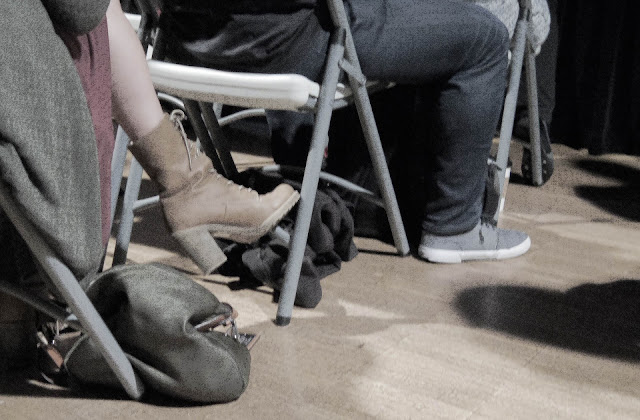
… are made for? There may be no article of clothing that has as many varied iconic associations.
Work boots; "are those steel toe?"
Thirsty Boots: 60s folk trivia
Jack boots: militarism
Gypsy Boots: now there's some early 60's trivia for you!
Boots of Spanish Leather: appropriate in light of a recent award.
Cowboy boots: originally work boots, but now a whole genre in itself
Beatle Boots: another genre
and, of course, (you didn't think I'd forget it, do you?):
By Professor Batty
Comments: 1
Wednesday, October 19, 2016
Jóhann Jóhannsson at the Cedar
My favorite Icelandic film composer was in town last night. I have more of his music than any Icelandic artist except Björk, so for me it was a "must-see." Although his live "performances" are somewhat static, his ideas are anything but. A perfect melding of electronica and classical, he can be challenging at times but can also be strangely uplifting. His soundtrack to "The Miners Hymns" is considered a modern classic, it has been performed live many times and a taste of it can be heard in the trailer for the film:
His list of awards and nominations continues to expand; he's scoring the upcoming Bladerunner 2049 remake as well. I'd seen him in person several times, both in Reykjavík and Minneapolis. Orphée, his latest opus, is based on the legend of Orpheus and is his first non-soundtrack album in six years, a "soundtrack without a movie" as it were:
The Cedar Cultural Center may be the best intimate venue in Minnesota, the performers usually play to the "short wall", so sight lines and closeness to the stage are very good. The minimal staging was effective, especially after the fog machine and the video projection began:
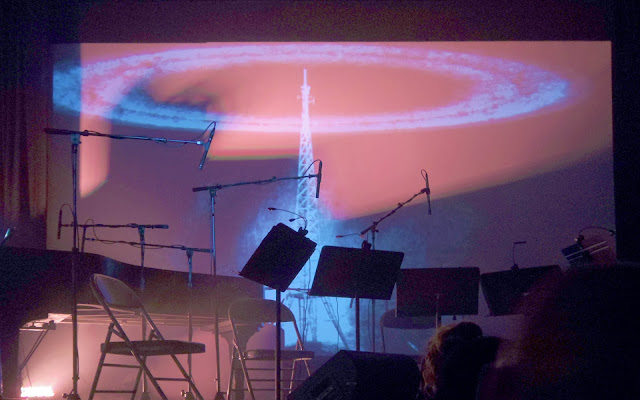
Jóhann came out and played piano with a string quintet and a reel to reel tape recorder that he used throughout the concert, even changing reels from time to time:

Jóhann sequenced his compositions in movements, seamlessly segueing between the sections (and tape changes); this was the best I've seen him in a classical setting. They played for a solid 100 minutes with no intermission.
For the last number, they played the song that started my infatuation with Jóhann:
By Professor Batty
Comments: 0
Monday, October 17, 2016
Mondays in Iceland - #81
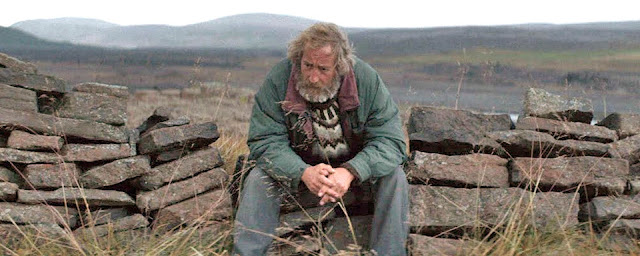
Hrútar (Rams)
This cinematic offering from Icelandic director Grímur Hákonarson concerns itself with the struggles of two brothers who raise sheep in Iceland. It is a extremely well-crafted, if slow paced, film set in the present but has saga-like overtones. It gives a unflinching look at life in rural Iceland and their timeless struggle of trying to make a living on this inhospitable rock in the North Atlantic. It is almost unrelenting in its grimness, except for the love the brothers have for their sheep. Their flocks have become like an extended family to these alienated bachelors, making the film even more tragic. Hákonarson is a fine director who can work in a variety of genres. I’m sure we’ll be seeing more from him in the future. The DVD I got from my local library (!) also has the Hákonarson short film Bræðrabylta (Wrestling) which I found to be exceptional. The actors, as is usually the case in Icelandic cinema, are superb.
It is hard to make a general recommendation for a movie whose plot revolves around diseased sheep; I found it to be worthwhile but a bit of a slog at times. Grímur is an accomplished filmmaker, this interview gives some background on his process.
By Professor Batty
Comments: 3
Friday, October 14, 2016
How Does it Feel?

I woke up yesterday to the startling news than Minnesota’s own Bob Dylan has joined a very exclusive club—Nobel Laureates in Literature. Our state had been tied with Iceland (Halldór Laxness) in that category but now we have TWO (Sinclair Lewis is the other). Looking at it from a per capita point of view Iceland is still way ahead but, nevertheless, I take a vicarious sense of pride in Bob’s accomplishment.
Finding a commonality between the two is difficult, but not impossible. They both took new names and their careers overlapped for a time: Laxness was polishing up his take on new-age poseurs in Christianity at Glacier at the same time Bob and The Band were visiting “Old Weird America” in The Basement Tapes. They shared a great respect for the films of Charlie Chaplin. A less coincidental similarity is that both figures were extremely well immersed in their respective cultures, and both championed the worth of the common people. In addition, they both had spiritual detours: Halldór entered a monastery in the 1920s, and Bob had his born-again era in the late 1970s. Both produced lasting works from these side-trips, and both moved beyond them. Laxness ultimately ended up with a vague form of Taoism (he was buried a Catholic, however) while Bob remains inscrutable in his spiritual beliefs.
Laxness produced a massive body of written work, while Dylan has produced a comparable amount of classic songs. Both had 6 decade careers, both are masters of the well-turned phrase. As an influence on modern thinking, Laxness has had a major influence in Europe but remains a minor figure elsewhere. Dylan’s influence is profound and deep across many cultures in the world.
This is the best comparison of Bob to Halldór that I’ve found so far:
One of the primary grievances of the out-groups… is that their voices are not heard and respected among the elite. Their concerns about diminished social and economic status, the failure of their communities and families and the general sense of abandonment are treated as collateral damage by elites, who condescend to them without actually understanding the cause of their pain.
Bob Dylan’s art, at its finest, dignifies those voices. He is not of those communities by origin, but he has embraced them so deeply and consistently through his six-decade career that he speaks on their behalf with clarity, conviction and authenticity. At the same time, he is an advocate for social justice at the most basic, human level, and in his mature work refuses to reduce either side of a discussion to caricature.
~Rob Salkowitz in Forbes magazine
That’s about as close to Laxness as you can get.
I'm looking forward to Bob’s Nobel acceptance speech, I’ll be comparing it to Halldór’s, that’s for sure.
By Professor Batty
Comments: 4
Wednesday, October 12, 2016
I Scream, You Scream…
Fargo, North Dakota, 1976
You know the rest, at least if you grew up in the United States in the last century. The actual song that this catch phrase originated from was done as a novelty tune in 1925 by Fred Waring and his Pennsylvanians. The reason you don't hear it performed in its entirety much anymore (and certainly not in the mass media) is probably due to its insulting racist lyrics. In that era it was evidently impossible to make a pleasant song extolling this tasty treat without disparaging an indigenous culture.
I'll let you be the judge:
By Professor Batty
Comments: 0
Monday, October 10, 2016
Saturday, October 08, 2016
North

Laurentian Divide Lookout, Gunflint Trail, Cook County, Minnesota
Back from travelin' in the north country fair, where the winds hit heavy on the borderline. In spite of Dylan’s foreboding lyric, the weather there was glorious, perfect for hiking on the myriad trails and byways in Minnesota’s Arrowhead region:
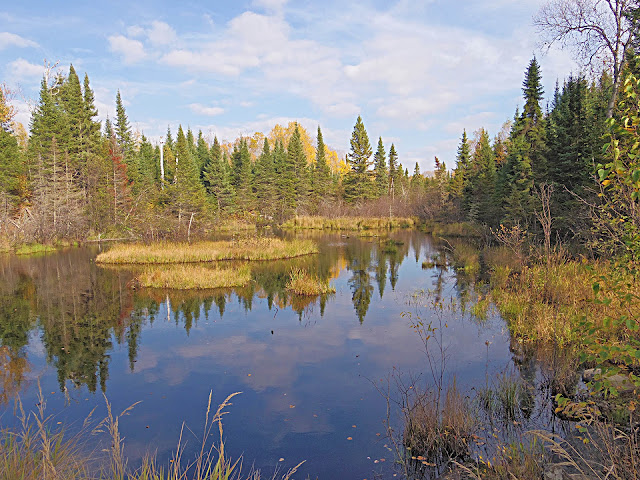
While we didn't encounter any wildlife bigger than the Blue and Gray Jays that came to our cabin for handouts, there were plenty of moose tracks, as well as the “calling cards” left on the side of the trash bins by the neighborhood bears:
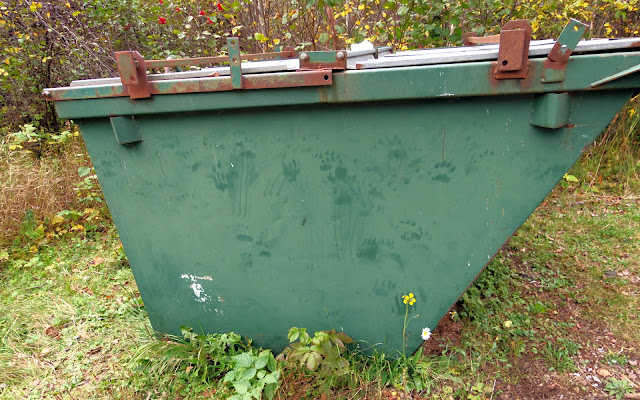
There were still a few fishermen plying their craft on the chilly waters:
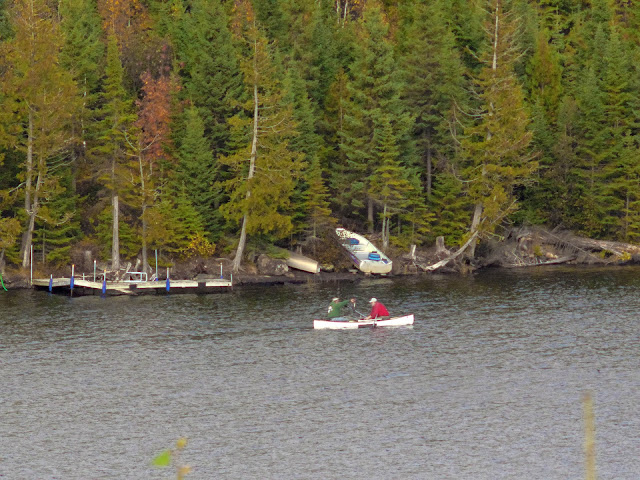
And forests full of fungi:
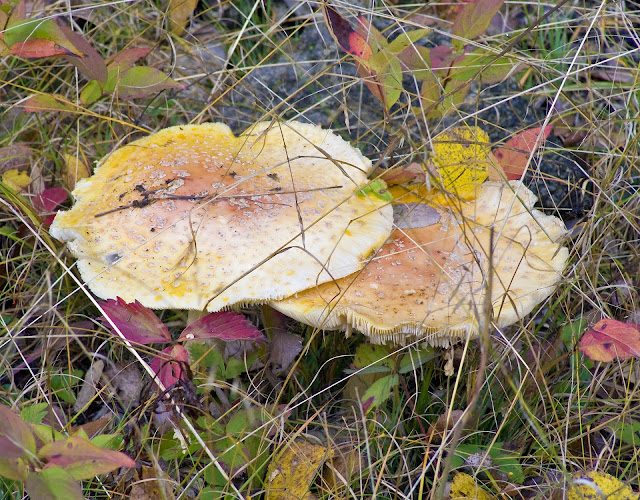
We did manage to catch a little local nightlife at the Trail Center:

And I even caught a glimpse of the rare

No birds in his beard, however!
By Professor Batty
Comments: 5
Friday, October 07, 2016
Homeward Bound

Today is a travel day: no new masterpieces of short-form writing. I'll be back Monday, in Iceland, with a special memorial post, then its back to business as usual for this poet and his one-man band on Wednesday.
By Professor Batty
Comments: 0
Wednesday, October 05, 2016
Kid Lit 101

One of the perks of living near elementary and middle schools is the occasional missive that I discover on my daily constitutionals. This budding writer can set the scene, he just needs a third act and the rest of the book will write itself!
By Professor Batty
Comments: 1
Monday, October 03, 2016
Mondays in Iceland - #79

Skólavörstígur
The other big shopping street. It is a little more diffuse, not as flashy as Laugavegur, but it does have its own charm. The last time I was there, on the walking tour, it felt like it was a street to be traversed on the way to other, more interesting places. Be that as it may, it is the home of 12 Tónar, hippest record store in the universe, as well as Café Babalu, Reykjavík’s funkiest coffee shop. It will be challenge for either place to survive the recent up-scaling of the neighborhood. For more on that topic check out Maria’s recent post at her most excellent blog, Iceland Eyes.
By Professor Batty
Comments: 0












